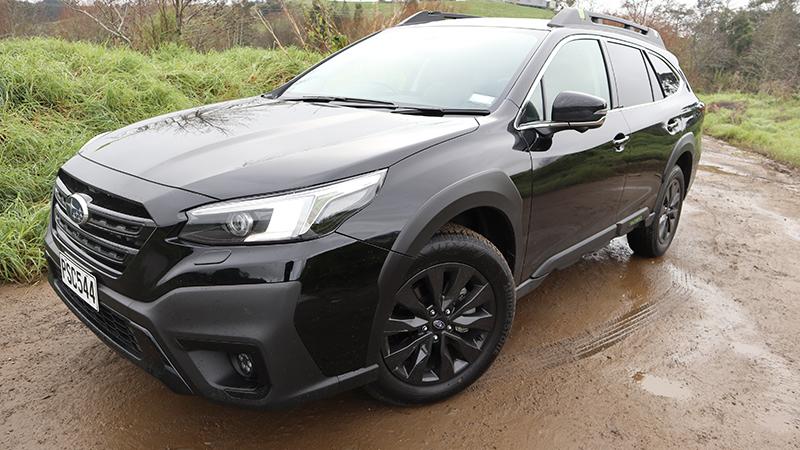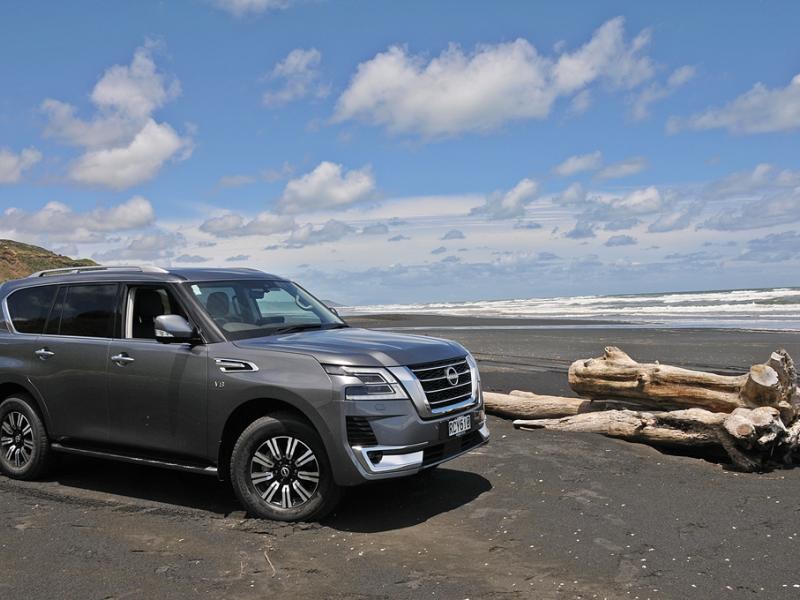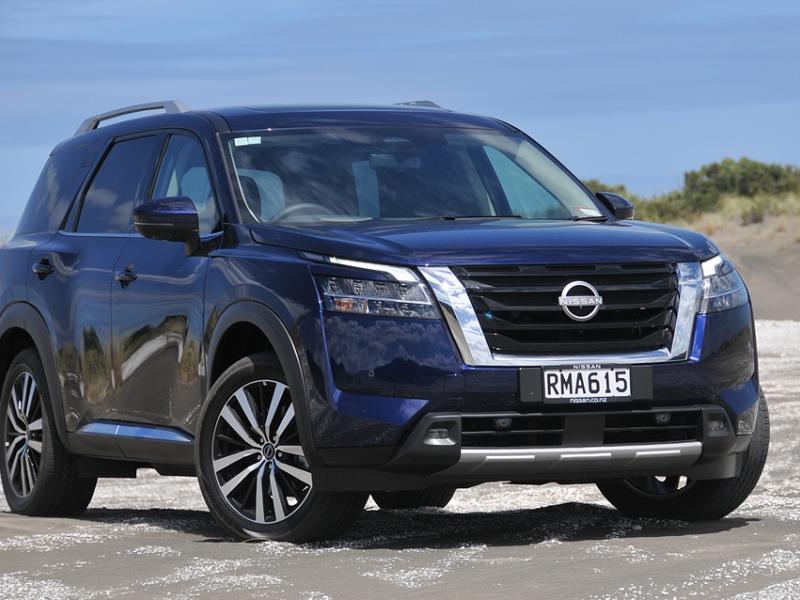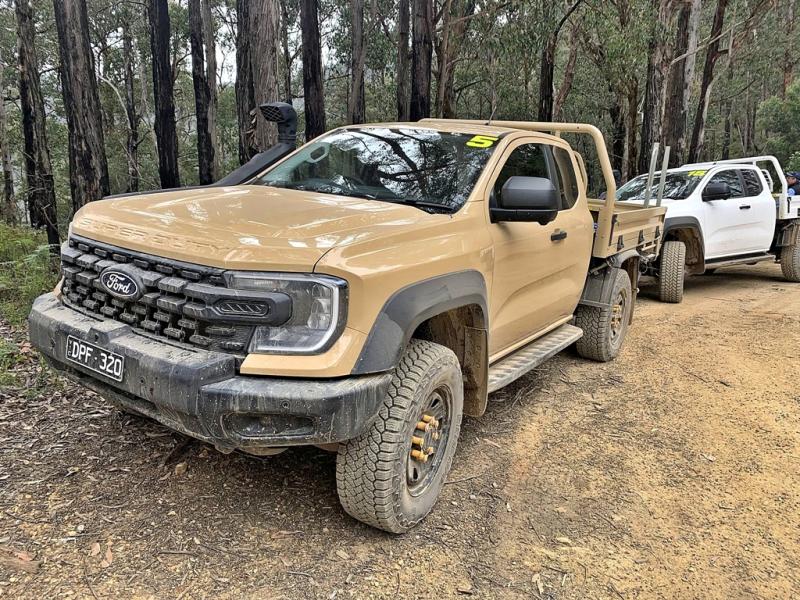If a traditional body-on-chassis 4WD is actually a ‘proper’ four-wheel drive in real terms, then Subaru’s take on all-wheel-drive sedans and wagons with capability and practicality might be the purest definition of a sports utility vehicle.
Aussie media categorise the Outback as a large SUV. Have to assume they haven’t driven a Jeep Grand Cherokee recently.
They also say the Outback is ‘car-like’. Ugh.
Our test vehicle is the 2.4XT, selling for $65,990.
The price includes the Government’s clean car penalty, a bump-up of around $5000.
Stand-outs from our week with the Outback: sublime ride quality and bump absorption; cabin comfort and ergonomics; and the smooth urge of that four-cylinder turbo engine.
More about that engine: it shares a wedge of DNA with the WRX, though its character is much more plush, positioned as a sporty family all-wheel-drive wagon par excellence. It’s a ‘Boxer’ format of course, with 94x86 bore-stroke ratio, commonly known as ‘oversquare’. It runs on 95 octane fuel. The engine feels sharp and responsive; 183kW and 350Nm are decent outputs for a 1730kg SUV. Peak torque is available from 2000rpm, which is right in the middle of the action from take-off.
The 2.5 naturally aspirated version makes 138kW.
It doesn’t sound like the ‘old’ Subaru, the throaty, lumpy bass note beloved by boy racers and rally fans, but that’s more about where Outback sits in the market and modern requirements regarding noise.
Economy is good as long as we remember it’s a 2.4 turbo engine – opening the throttle wide does tend to wreck economy goals. Fun though. In real-world usage against the official numbers, the Outback is quite efficient. The claim is 7.3L/100km on the combined cycle, and that seemed achievable. Pressing on around Port Waikato (gravel, twisty roads, some sand tracks) we nudged the figure to an indicated 10L/100km.
Worth mentioning: while auto stop/start can be an acquired taste, the Subaru’s one is smooth in operation and does give a driver display of the fuel it saves.
The engine runs through an ‘eight speed’ CVT transmission, one of the better CVTs we’ve tried. Let the transmission do its work, or use ‘M’ and the paddle shifters. The transmission is neatly matched to the engine. There are eight theoretical ‘steps’ in the CVT, but that’s less relevant than how the transmission works with the engine, and it doesn’t offer up any of the shrieking nastiness of earlier CVTs.
Drivelines in modern SUVs get cloaked in all manner of electronic control systems. Outback is no different, but Subaru’s all-wheel-drive system remains a highlight.
On any surface, wet or dry, muddy clay or gravel or bitumen, the Outback is sure-footed, planted and secure.
There’s a relaxed nature to the drive experience that comes with a quality AWD system, and Subaru’s has always been one of the best. On sealed roads, it’s hard to imagine pushing the Outback beyond its comfort zone, such is the way it puts drive to the ground. Of course, there’s always the fool who’ll let a capable vehicle flatter their perception of their own capability and cause a fuss.
A walk around the exterior reveals those sculpted lines that maintain a family look but endow Outback with its own unmistakeable identity, pretty much unchanged from 2022. The XT goes a step further though, with roof bar tie-down points picked out in bright green and each rear door bearing the Outback name in a similar hue.
For simply practical reasons, it’s probably worth choosing a different main colour if gentle offroad adventuring is part of the plan. Black shows the mud and dust and washing is a chore, it’s relatively easy to damage the clear cost and leave swirls.
At the rear, the model badges are in satin black, a little lost against a black paint job. The Outback is at home on tarmac and gravel and deals with road imperfections without fuss. To be clear, this is (of course) no hard-core off-roader, it’s a crossover with substantial ground clearance (213mm) and dual-function X-Mode transmission management that includes deep snow and mud settings.
That ground clearance is pretty good, and dynamically it’s no handicap at all, the Outback well able to keep good pace on twisty ‘B-roads’ out in the north Waikato.
Chunky 60-section tyres and 213mm of ground clearance signal inherent capability, but the genius lies in the software of Subaru’s deftly intuitive ‘X-Mode’. X-Mode’s Deep Snow/Mud escape setting deactivates traction control and uses torque-vectoring-by-brake to routinely pulsate each wheel so the car can identify which corners have grip and direct effort to them.
It really is an ‘idiot-proof’ system, enabling hill descent control, and comprising a no-slip general Snow/Dirt mode as well as a Deep Snow/Mud setting for more extreme obstacles.
Controlled bursts of wheel slip can also aid escape and recovery from deep slush, snow and mud – where there’s often a hard-packed layer beneath the surface.
Whether on the road or off it, the XT impresses with the Outback’s traditional strengths of deft body control and a well-considered ride.
The Outback has a distinctive set of metallic-finish 18-inch aluminium alloy wheels clad in 225/60 Bridgestone tyres. They are highway-biased, with lots of rubber and very little void, but they coped well with the gravel and clay we encountered.
A little body roll is brought about by the higher centre of gravity, but the overall Outback driving experience feels much more ‘car-like’ than that of an SUV.
Brakes, like almost all proper SUVs, are discs front and rear. Subaru goes a step further with all four disc rotors being ventilated.
Safety is – as always these days – paramount. It’s nice to see manufacturers working toward driver assistance packages that work less intrusively than older “hand of God” steering-nudgers, one of which had a panic attack on us last year in a narrow section of motorway, thinking we were too close to the centre barrier and pushing us toward the left lane, which happened to be full of petrol tanker at the time.
Outback has the EyeSight dual-camera system and a Driver Monitoring System (DMS) that includes facial recognition.
The latest iteration of Subaru’s vaunted EyeSight system includes adaptive cruise control, emergency lane-keep assist, lane centring function, lane departure prevention, lane departure warning, lane sway warning, lead vehicle start alert, pre-collision brake assist, pre-collision throttle management, autonomous emergency steering, brake light recognition, intelligent speed limiter and speed sign recognition.
The DMS can automatically adjust the driving position and settings for up to five people. It is also always watching, and warns the driver if it assesses that attention is not being paid to the road ahead. It’s an alertness monitor, fine on the open road or around town but we can see it being annoying on the Whaanga Coast Road, which has hairpin switchback corners where the natural instinct is to look across the corner at where the vehicle needs to go next.
Outback’s airbag suite comprises dual front, dual front side, dual curtain, driver’s knee and front passenger cushions.
Inside, the Outback continues to impress. The build quality and materials are impressive, the fit and feel of the two-tone leather-clad seats is superb and the large 11.6in portrait infotainment screen combines a number of functions with ergonomic good sense. One surprising omission is an inductive charge pad for phones.
Outback was more of a medium crossover when it was launched in 1994, a Legacy wagon with a suspension lift, but these days it has truly outgrown those origins. It’s a truly premium SUV, 4870mm long, with loads of space for five (no third-row option though) and 522 litres of boot space. Fold the rear seats down and the space jumps to 1782 litres.
Given Outback’s target market, it’s not likely the lack of a third row of seats will break many deals.
Who, after all, wants to swan off to the beach or snow with a huge messy tribe of family and hangers-on? Keep it simple, people, or buy a people-mover.
In summary, we like a five seat SUV that is uncompromisingly urban-focussed but has the ability to tackle ice, mud and sand with aplomb. We can see why this Outback is beloved of the ski set.
We don’t feel the need for a third row of seats, preferring the luggage capacity instead. We understand why it’s not even mild-hybrid, since the flat four engine is so good and delivers seamless performance.
This really is the best Outback ever. So far.







